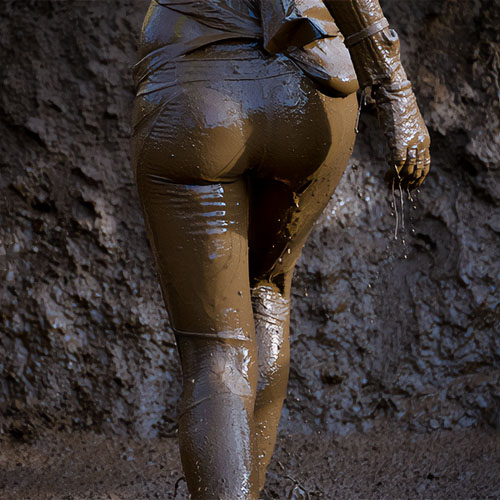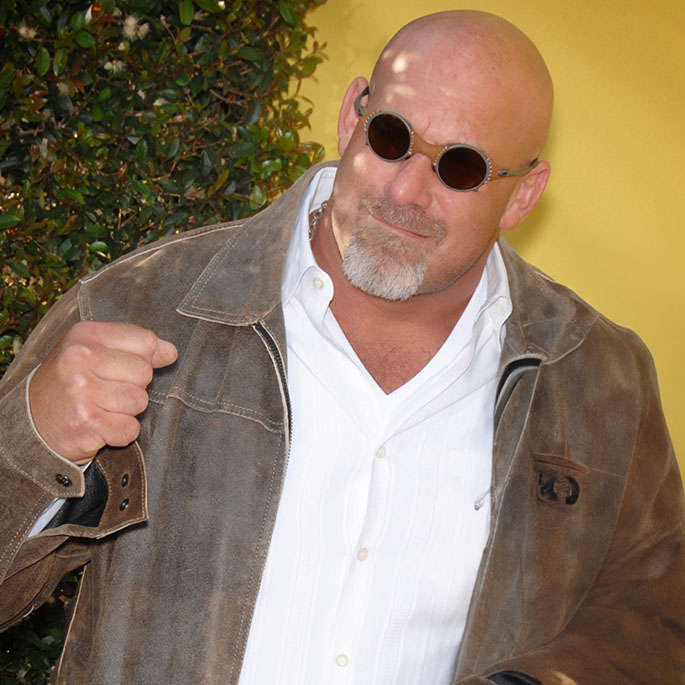Bullfighting may be on its way out, but it’s not going quietly, as our man in Madrid reports.
We Call Bullfighting Simply Bullsh**
The beast, 1,000 pounds or more, trains its eyes on the swatch of every color 20 yards away, panting heavily, head cocked, massive chest heaving. A stream of brownish crimson flows from a wound at the back of its sides, dripping to the ground. The beast is frustrated, confused, and furious. It charges — and misses. Charges again — and misses. It’s shaking its head side-to-side now, frothing at the mouth, in great pain.
The man calls to the beast from 20 yards away: “Hey! Hey! Hey!” He prances toward it, urging the enormous animal closer. He performs a ritual dance, thrusting his hips at the onrushing bull, drawing it in — and right by. In — and right by.
The man is full of bravado now. He drops to his knees to lure the animal back. The audience gasps. The beast lunges forward, and past again. Man and beast are now standing more than two feet apart. Under normal circumstances, the horned creature would hold a gigantic deadly advantage. Now, the situation is reversed. The crows buzzing with excitement, smells blood. They call out to the man to end it: “¡Mátale!”
I’m sitting in the grandstand 15 rows up, directly above the spectacle. I’m clutching my seat. My stomach is turning. I call out to the man. “Kill him!”
The art of bullfighting (don’t dare call it a sport — aficionados describe it as a beautiful play, on a higher plane than mere “sport”) is believed to have started some 2,000 years ago, as representations of man vs. bull showdowns have been discovered in ancient Roman cities located in what are today parts of Spain. It’s possible that the “Christians-to-the-lions” custom during the Roman Empire also included bulls.
The modern version of bullfighting took shape many centuries later as holidays, religious festivals, and royal weddings were paired with fights in the early eighteenth century. Bullfighting in Spain today retains that same celebratory vibe. Madrid’s San Isidro festival lasts the month of May and features daily partying in the streets and a big bullfight event every night. You can find bullfights elsewhere in the world — in Mexico, parts of Central and South America, Portugal, and France — but Spain, particularly Madrid and the southern region of Andalusia, remains the epicenter, armed with most of the best toreros (bullfighters), the biggest crowds, and the richest traditions.
Tradition is the operative word for an art with both gladiatorial and agrarian roots. Today as they did hundreds of years ago, aspiring toreros learn their craft in a country setting. They live on a ranch, estate, or large farm, and feed and care for bulls. They help pick the bulls that might someday have the right stuff — the courage and determination to charge in a straight line again and again — to get their day in the ring.
Beyond having an eye for taros, top toreros must possess a rare combination of talent, charisma, bravery, and machismo. The most famous and highly paid torero in the world is “El Juli,” Julian Lopez Escobar. Estimates vary widely, but it’s believed that Lopez takes in at least $75,000 per appearance.
Lopez made his bullfighting debut at the precocious age of 14, when his performance in Texcoco, Mexico, earned him a standing ovation and two ears — the severed ears of dead bulls being trophies awarded for an extraordinary effort. A year later, he became the youngest professional torero of all time. By age 17, he’d become the highest-paid torero ever. His looks, fame, wealth, and immense skill cemented Lopez as a matinee idol in Spain, on par with the biggest movie stars and pro athletes in the United States. Lopez hits charging bulls with his own banderillas (darts), a feat usually reserved for a separate, highly trained banderillo. Where a typical bullfight consists of three toreros fighting two bulls each, Lopez will occasionally fight all six bulls in one performance.
It’s one thing to risk your life for tens of thousands of dollars per fight, but quite another to do it for a fraction of that, as Antonio Judas did for six years of his young manhood. Judas grew up in one of the most tumultuous times in Spain’s history, under Francisco Franco’s fascist rule in the 1940s and ’50s. He first came into contact with a bull when he was 11, but wasn’t immersed in toros culture until his teens, when he met a rich patron who took him in on a huge estate in Andalusia. There, Judas tended cattle on the ranch and practiced against live bulls. Judas’s debut in the ring came at age 17, in Seville. He spent the next few years traveling from Seville to Madrid to Barcelona to small towns all across Spain — a true journeyman, with a journeyman’s pay. Promoters would cover the cost of his accommodations, travel, and food. He’d get a small honorarium to go for a pack of cigarettes, a few beers, and trips to the barber, but that was it. For the price of bare essentials and a little walking-around money, he squared off against hundreds of riled-up, 1,000-pound bulls.
”People didn’t have much money then,” he says with a shrug. “It was something to do.”
For the next 90 minutes, Judas embarks on a rollercoaster conversation in his thickly accented Spanglish, talking of life under Franco, his admiration for John F. Kennedy, and his move to Toronto, where he opened a flamenco bar that Cassius Clay used to visit. The 72-year-old Judas bounds up and starts singing and dancing with the verve of a 22-year-old.
What all of us sitting at the table are dying to know, though, is what goes through your mind when a bull charges at you.
“It’s me or the bull,” Judas says flatly.
Did you feel any remorse when you made your first kill?
“It’s me or the bull.”
How do you keep your fear in check?
”It’s me… or the bull.” Well, then.
We exit the Las Ventas metro stop in Madrid and climb the stairs to the street above. Against a bright blue afternoon sky, the Plaza de Toros de Las Ventas rises up in grandeur. It’s a tall, Moorish-style brick building with blue tile accents embedded throughout and turrets up top.
We’ve come for the second bullfight weekend of the season, in mid-March. Sunday events are largely held for tourists, we learn, and in a grand building like Las Ventas, wide swaths of empty seats are the norm this time of year. During San Isidro, in May, Las Ventas is packed for the most important bullfighting event in the world, and everyone in town is ginned up, literally and figuratively.
Spanish bullfights play out in three parts. In the tercio de varas (“the third of lancing”), we see the torero sizing up the bull. A lot of posturing occurs, with the torero edging toward the bull, then ducking behind a brick wall to protect himself when the bull charges. Though the practice seems odd and frankly a bit cowardly, it makes sense — when the bull’s at full strength at the start of the performance, it’s far too dangerous to tangle with for long.
Next — still in stage one — a picador enters the arena on horseback armed with a vara, a spiked lance. Until 1930, the horses were unprotected, leaving the bull free to disembowel the horse when he charged; horses are now protected by a covering that resembles a thick mattress. The picador pierces the bull on the back of the neck as the beast glances off the horse’s flank. The object of this exercise is to weaken the bull’s neck muscles so that later on, it will carry its head and horns lower, making it safer for the torero.
The crowd is rapt when the bull starts charging more frequently in stage two, the tercio de banderillas (“the third of flags”). In this segment, three banderilleros join the torero in the ring. Each one draws the bull toward him, dodges, then plants two banderillas (metal darts) into the bull’s back.
In stage three, the tercio de muerte (“the third of death”), the torero is in the ring alone, armed with a red cape and the sword he keeps behind it. He calls to the bull, luring him in again (Ole!) and again (Ole!). He struts toward him, saying something in a low voice. I can’t make out his words, but he almost seems to be comforting the bull, complimenting him for his bravery and telling him it will all be over soon. Whatever one might think of bullfighting in general, it’s hard not to be impressed and inspired by the courage and grace of the torero. The stark, dramatic character of the setting — ring, dirt, man, beast — is also compelling.
Still, I am repulsed as much as compelled by those final few moments. There is blood dribbling down the bull’s back, it’s suffering, and everyone knows what’s coming next.
I’m not alone in my distaste, even in Madrid. “It’s a tradition, but that doesn’t justify the cruelty or brutality of the sport,” said Manuel Gamez, a graduate student in psychology at the Autonomous University of Madrid. In 2007, a consortium of some 30 arts and sports personalities supported a motion before the Spanish parliament in Madrid calling for a ban on the centuries-old tradition. That was a first. A 2006 Gallup poll found that 72 percent of Spaniards have “no interest” in bullfighting, and that those over the age of 55 show the most support for it.
On the other hand, a bullfighting aficionado develops an appreciation for the spectacle, the skill of the torero, and the nobility of a bull that fought to the last.
”A person with increasing knowledge and sensory education may derive infinite enjoyment from wine,” Hemingway wrote in his classic book on bullfighting, Death in the Afternoon, “as a man’s enjoyment of the bullfight might grow to become one of his greatest minor passions.”
It’s this sort of refinement that gave rise to a bullfighting controversy in Spain in early 2009. Two toreros who were previous winners of the Spanish Culture Ministry’s Fine Arts honor returned their medals in protest of the honor going to Francisco Rivera Ordonez. Though he’s an accomplished torero, Rivera is best known for having once married a daughter of Spain’s most titled aristocrat, for dating a former Miss Spain, and for gracing the covers of gossip magazines. The earlier winners, Jose Tomas and Paco Camino, argued that the Ministry favored glitz over substance in honoring Rivera, and had “degraded the notion of bullfighting as art.”
But could it be that the Culture Ministry spotlighted a glamorous, pop-star figure as a hedge against the increasing marginalization of bullfighting? Aficionados argue that such a plan would backfire, and drain more purity out of the pastime, while others claim the controversy, and the rivalries it sharpened, would be good for bullfighting.
Some went so far as to suggest that Rivera and Tomás have an old-fashioned, you’ve-offended-my-honor duel—or at a minimum, square off in a bullfighting competition.
We know which option the bull would choose.

























